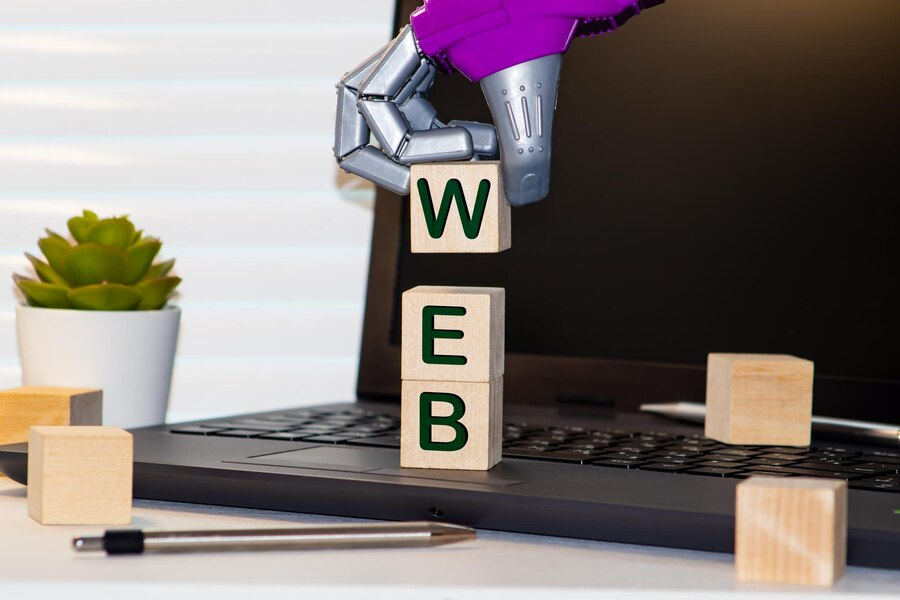222 Capitol Street, Suite 522
Charleston, WV 25301

The Future of Web Development: What's on the Horizon
In the ever-evolving landscape of technology, the realm of web development stands as a testament to the relentless pursuit of innovation. With each passing year, new technologies emerge, trends shift, and user expectations evolve, shaping the future of web development. As we stand on the precipice of a new era, it's crucial to cast our gaze forward and explore the exciting possibilities that lie ahead. In this blog post, titled "The Future of Web Development: What's on the Horizon," we embark on a journey to unravel the mysteries of tomorrow's digital landscape. From emerging technologies to paradigm-shifting trends, we'll delve deep into the forces driving the evolution of web development and illuminate the path forward for developers, businesses, and users alike. So buckle up, dear reader, as we embark on a thrilling exploration of the future of web development.
Emerging Technologies Shaping the Future of Web Development
In the dynamic realm of web development, staying ahead of the curve is essential. As technology continues to evolve at a rapid pace, developers find themselves at the forefront of innovation, tasked with harnessing emerging technologies to craft the digital experiences of tomorrow. Let's take a closer look at some of the key emerging technologies that are shaping the future landscape of web development:

- Artificial Intelligence (AI) and Machine Learning (ML): AI and ML are revolutionizing web development by enabling intelligent, data-driven applications. From chatbots that provide personalized assistance to algorithms that analyze user behavior and preferences, AI-powered interfaces are enhancing user experiences in unprecedented ways. Developers are integrating AI and ML capabilities into their projects to automate tasks, improve decision-making processes, and deliver more tailored content to users.
- Augmented Reality (AR) and Virtual Reality (VR): AR and VR technologies are blurring the lines between the physical and digital worlds, opening up new possibilities for immersive web experiences. Web developers are leveraging AR and VR to create interactive environments, virtual tours, and engaging storytelling experiences. Whether it's exploring a virtual museum or trying on clothes in a virtual fitting room, these technologies are transforming how users interact with web content.
- Internet of Things (IoT): The IoT ecosystem is expanding rapidly, connecting everyday objects to the internet and enabling them to communicate and interact with each other. Web developers are tapping into this interconnected network to create web applications that control smart devices, monitor environmental conditions, and collect real-time data from sensors. As the IoT continues to grow, web development will play a crucial role in building the infrastructure needed to support this interconnected world.
- Blockchain Technology: Blockchain technology, best known for its role in cryptocurrencies like Bitcoin, is finding applications beyond finance in various industries, including web development. Developers are exploring the potential of blockchain for building decentralized applications (DApps) with enhanced security, transparency, and data integrity. From decentralized social networks to secure voting systems, blockchain technology offers a new paradigm for building web applications that prioritize privacy and trust.
- Progressive Web Apps (PWAs): PWAs are web applications that offer a native app-like experience while leveraging the reach and accessibility of the web. These lightweight, fast-loading apps can be installed directly from the browser and work seamlessly across different devices and platforms. With features such as offline support, push notifications, and responsive design, PWAs are becoming increasingly popular among developers looking to deliver engaging web experiences to users.
Securing the Future of the Web: Navigating Cybersecurity Challenges
In an increasingly digital world, cybersecurity has become a paramount concern for web developers and users alike. As the web continues to evolve and expand, so too do the threats that target its infrastructure and users. Navigating these cybersecurity challenges is essential to safeguarding the future of the web and ensuring a safe and secure online experience for all.
The Growing Threat Landscape
The threat landscape facing the web is constantly evolving, with cybercriminals employing increasingly sophisticated tactics to exploit vulnerabilities and compromise security. From phishing attacks and malware infections to data breaches and ransomware, the range of cybersecurity threats is vast and varied. Developers must remain vigilant and proactive in identifying and mitigating these threats to protect their websites and users from harm.

Importance of Secure Development Practices
Secure development practices are crucial for building resilient and secure web applications. Developers should adhere to established security guidelines and best practices throughout the development lifecycle, from design and coding to testing and deployment. This includes practices such as input validation, secure authentication mechanisms, and encryption of sensitive data. By prioritizing security from the outset, developers can minimize the risk of vulnerabilities that could be exploited by attackers.
Web Application Security
Web applications are particularly vulnerable to security threats due to their interconnected nature and the potential for attackers to exploit weaknesses in the underlying code. Common vulnerabilities in web applications include cross-site scripting (XSS), SQL injection, and insecure deserialization. Developers must implement robust security measures, such as input sanitization, output encoding, and parameterized queries, to defend against these threats and protect sensitive data.
Data Privacy and Compliance
Protecting user privacy and complying with regulatory requirements are essential aspects of cybersecurity in web development. Developers must adhere to data protection laws such as the General Data Protection Regulation (GDPR) and the California Consumer Privacy Act (CCPA), which govern the collection, storage, and processing of personal data. This includes implementing measures such as data encryption, access controls, and data minimization to safeguard user privacy and ensure compliance with legal obligations.
Web Server Security
Securing web servers is critical for preventing unauthorized access and protecting against various types of attacks, including denial-of-service (DoS) attacks and server exploits. Developers should follow security best practices for configuring and managing web servers, including regular software updates, strong authentication mechanisms, and robust firewall and intrusion detection systems. Additionally, implementing HTTPS encryption using SSL/TLS certificates helps ensure the confidentiality and integrity of data transmitted between clients and servers.
Conclusion
As we peer into the future of web development, it becomes evident that the landscape is constantly evolving, presenting both challenges and opportunities for businesses like Ideation Digital Marketing. With emerging technologies and trends such as AI, voice search optimization, and immersive experiences, businesses must adapt and innovate to stay ahead in the digital realm. The address of Ideation Digital Marketing at 222 Capitol St. Suite 522, Charleston, WV 25301, USA, reflects its presence in a dynamic environment where staying abreast of the latest developments is crucial. By embracing change and harnessing the power of cutting-edge tools and strategies, companies can position themselves for success in the ever-changing world of web development.

Main Office
222 Capitol Street, Suite 522
Charleston, WV 25301
other offices
48 1/2 Second Ave, Williamson, WV 25661
20 Clinch Mountain Ave, Lebanon, VA 24266,
Contact
DIGITAL MARKETING SERVICES
All Rights Reserved | Ideation Digital
Private Policy
All Rights Reserved | Ideation Digital












